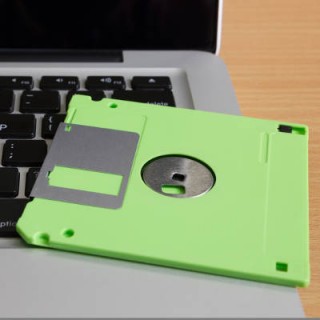If you let your employees use their own devices for work purposes on the company network or wireless Internet, you might be seen as “the cool boss.” Your employees love this privilege, but this can be a dangerous practice if done so without moderation. Here are some of the many benefits that your organization can reap from a well-thought-out BYOD policy, as well as some of the pitfalls you could fall into if you’re not careful.
Infradapt Blog
Subcategories from this category:
IT Blog, Best Practices, Technology, Press Releases, Alerts, Miscellaneous, How To, Security, Business, Cloud, Off Topic/Fun, Uncategorized, Tip of the WeekTabbed browsing--it’s so commonplace that some might not even think about what it was like to use the Internet before tabs became a thing. Believe it or not, even this seemingly simple feature has a lot of depth to it. There are all sorts of tips and tricks that you can use to better use the tabbing features of your favorite web browser.
Business has become such a competitive endeavor that those who deprive themselves of the latest and greatest technology solutions could be at a serious disadvantage--namely in terms of productivity and security. A new study shows that there is a direct relationship between businesses that run older versions of operating systems and web browsers, and businesses that fall victim to data breaches.
When implementing a new project, expectations run high and deadlines must be met. The temptation is to feel so pressured to get the project finished that the planning phase is rushed. If even a small detail is overlooked and a shortcut is taken in this early stage, it can come back to bite you in a major way--perhaps even derailing the project altogether. This is especially the case for an IT project.
CIO.com provides a working ratio of why such oversight is important for IT projects of any size, especially during the more risk-prone discovery phase. “Discovery is the crux of project risk. Although the discovery and architecture phases of a project may represent only 15 percent of the overall effort, an error or omission early on can cause cost overruns of 150 percent or more.” Have you experienced an issue of this scope in any of your company’s previous projects?
In order to prevent your next IT project from facing a disastrous end like this, you're going to want to invest the time needed to perform the discovery and architecture phases correctly, the first time. But how can you make sure this happens?
For starters, working closely with your vendors and service provider is a must. If you detect that they’re not thoroughly answering your questions or that they’re trying to rush the project in any way, then you’ll need to speak up about it, before it’s too late. Instead, you need to make sure your vendors are guiding you through each step of the process, and that they’re assertive enough to present you with options and tough choices when it comes to unpleasant tradeoffs.
Secondly, you need to know what it looks like when a project is being rushed or shortchanged. This can be difficult to catch for a busy business owner with only a surface-level knowledge of IT. At Infradapt, we know what this looks like and we want to pass this information onto you. When in the discovery/architecture phases of your next (or current) IT project, look for a vendor taking these four shortcuts.
- The documents prepared for the project are based less on what your company’s specific needs are, and instead are overly influenced by industry jargon and sales propaganda. The idea here is to overwhelm a business owner with features and benefits that sound great, but may not be precisely what the project needs and what real users would actually use. Classic snake oil sales strategy.
- Project requirements aren’t prioritized adequately. This shortcut will provide poor guidance when it comes to the step-by-step implantation of the project, and the hard trade offs that are sure to pop up when dealing with a budget and a deadline will hit unexpectedly.
- The project requirements are lacking important steps, like transitions in the end-to-end business process. If these gaps are uncovered during the implantation phase instead of the discovery phase, then meeting these unplanned requirements will push back the schedule, and may even change the entire scope of work needing to be done.
- The needs of the business evolve dramatically enough over the course of the project that the project proves to be insufficient upon its completion. Keep in mind that technology itself is prone to becoming obsolete by newer solutions. Shortsightedness in both areas can make it frustrating to have to go back and redo the project much sooner than expected.
These four shortcuts can devastate an IT project, or any project for that matter. One way that you can safeguard your business from these risks is to hold consultation sessions all throughout the course of the project--as opposed to leaning heavily on the original project roadmap, which may grow more unreliable as the project progresses from phase to phase. Infradapt can provide this kind of project oversight for your next IT initiative, as well as spend the time needed in the early phases of the project. This will ensure that no stone is left unturned and every possible circumstance is accounted for.
Give us a call at 800.394.2301 and don’t plan your next IT project without first consulting with the pros.
Let’s say that you are a consumer looking to take advantage of data backup in an affordable way. You want a way to keep your data safe in the event of a disaster. For the average PC user, Google Drive now allows users to take backups of specific files and folders via the Backup and Sync application on their desktop PC.
It can be challenging and costly to maintain your business’ network system, but it doesn’t necessarily have to be. A managed service provider can help your business achieve all of its technology-related goals, including regular network maintenance. You might be surprised by how many benefits proactive network maintenance can provide for your organization.
You need to quickly move documents from one computer to another. Do you reach for a USB Thumb drive? You may want to think twice and entrust the cloud to your data. Let’s talk about why.
A Brief History of Recent Data Storage Methods
Throughout the 1990s, NAND flash memory--which is what stores the data on a USB flash drive--was progressively becoming more and more affordable. The first company to sell a USB Flash Drive was a Singaporean company Trek 2000 International, who released their proprietary ThumbDrive at the beginning of 2000. Later that year, IBM became the first producer to sell USB flash drives in the United States with their product, DiskOnKey.
The cloud, believe it or not, was thought up in 1969 by J.C.R. Licklider. His idea was an online storage system that could be accessed from an Internet connection anywhere in the world--an idea that had to wait until the technology was there to support it. Once it was, many well-known companies (like Google and Amazon) were quick to leverage the cloud to provide utilities, including data storage capabilities.
Comparing the Two...
...however, there isn’t much of a comparison. The biggest benefit that a USB flash drive has to offer is the fact that it doesn’t rely on an Internet connection to access files. Otherwise, there isn’t much to be said about them that’s positive other than the convenience of portability. They’re easily infected by malicious programs, easy to lose, and easily stolen. Plus, they don’t offer near the collaborative abilities that the cloud does.
Cloud storage is, first and foremost, very secure against threats and malware, and backed up to protect your data against any circumstances that might put it at risk. Security mostly includes AES-256 encryption and superior access control through multi-factor authentication. As far as collaboration goes, the cloud offers much more utility than passing around a USB drive ever could.
The cloud allows you to work on your documents and data from any device with an Internet connection (we recommend that you make sure your connection is secure), sharing access with any other user by sharing a simple link. Also unlike the USB device, which only allows a single person to work on a file at a time, multiple users can manipulate the data simultaneously, simplifying any responsibilities that require collaboration.
While the USB thumb drive had its moment in computing history to be the star of data storage and sharing, that title has moved on to the cloud. Has your business done the same?
Infradapt can help you make the move to the cloud. Call us at 800.394.2301 for more details.
Sometimes, the small screen of your mobile device is just too small. Instead of buying a whole new device that’s bigger and better, you can remedy this by simply mirroring your phone’s screen to a larger screen. Here’s how to do it from your Android device to your Windows PC.
First off, a word about mirroring. We’re NOT talking about using your phone as a mirror to check your teeth for ‘passengers’ before an important meeting--though there are several apps that could help with that. Instead, mirroring is when what’s displayed on one screen is also displayed on a second screen in real-time. In the case of the goal we’re trying to achieve in this week’s tip, we’re showing you how to take what your Android device is displaying and mirroring it on the monitor of your Windows PC.
Now, your Android device does not come preloaded with this feature, which means you’ll have to pay the Google Play Store a visit.
There are actually a few different mirroring apps that you can download for free. One of the most popular apps is AirDroid. You can find it in the Play Store here.
Keep in mind that AirDroid requires root access and Wi-Fi in order to work properly, so it might not be possible for the average employee to do use. There are other apps that can be used, such as TeamViewer and various other screen sharing apps, but you’ll want to check with IT to ensure that one of them is a proper fit for your organization. Of course, you might already have a solution put into place in order to handle this function, so you might be pleasantly surprised.
An alternative to mirroring your device’s screen is to use a casting solution such as Google Chromecast. While this is primarily a consumer-based technology that can be used for streaming apps such as YouTube, Netflix, or other videos to a connected television, it also has business functions. For example, Chromecast supports a variety of business-related apps that can be cast from your mobile device or laptop to a television screen. You can view documents as a group or conduct meetings, depending on your business’s unique needs.
Mirroring your screen and casting applications can be a great way to help your business take its meetings to the next level. How is your organization conducting meetings? Could it use these technologies to change the way it functions for the better? If so, reach out to Infradapt. Our trusted technicians will work with your organization to fulfill its goals. To learn more about business technology solutions, reach out to us at 800.394.2301.







